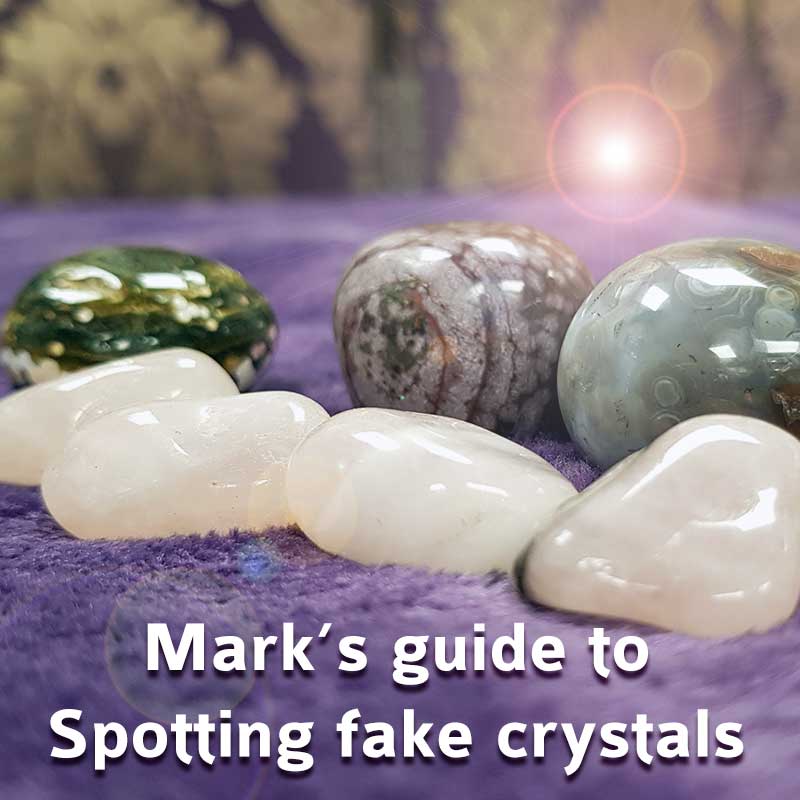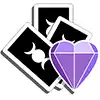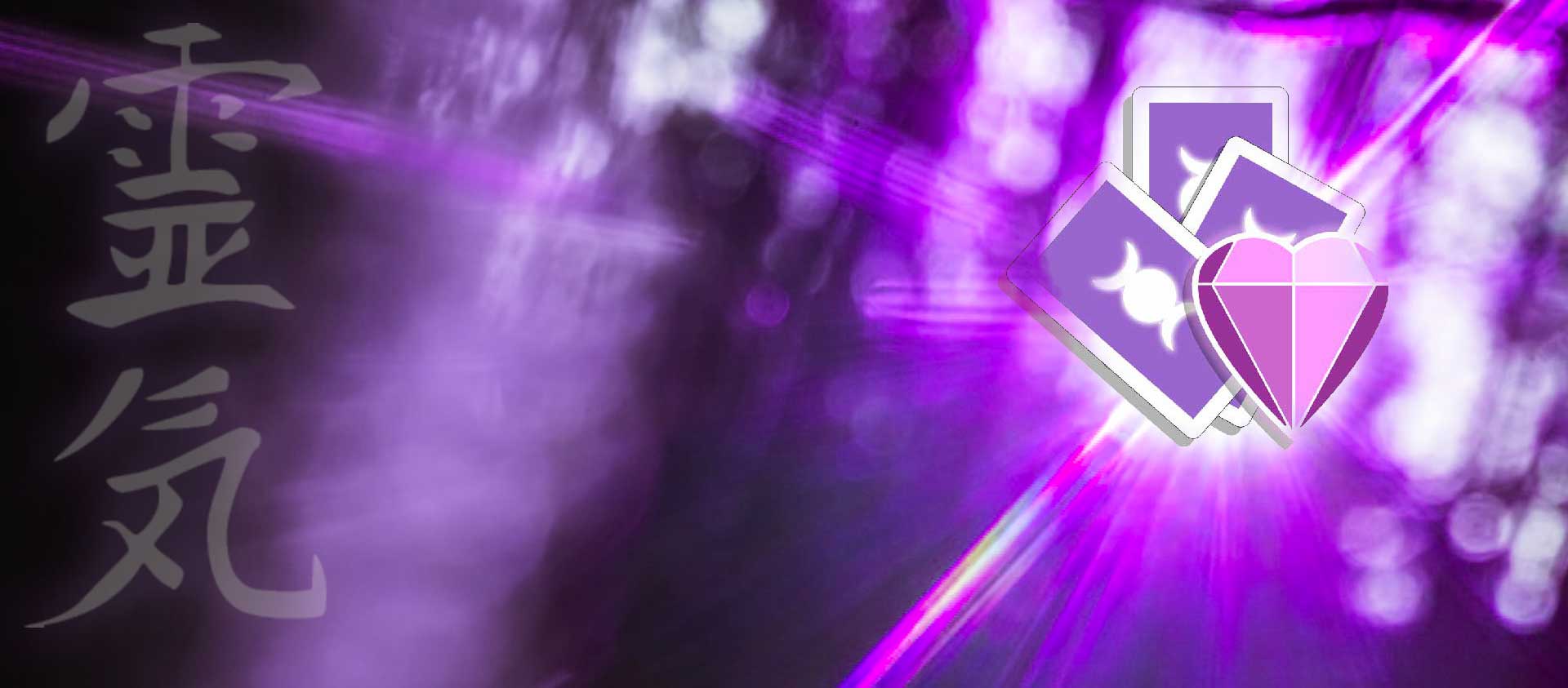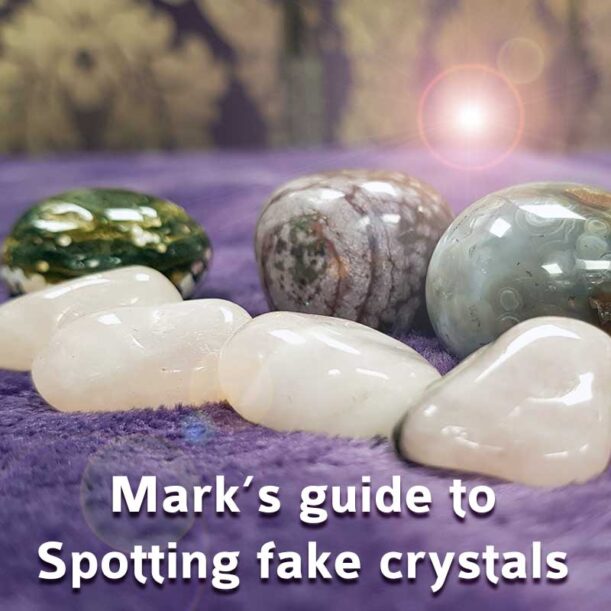Here we will look at synthetic, man-made and fake crystals.

I have discussed enhanced crystals in another post, and most people would agree that all the gemstones are, or started out, as natural gemstones.
There is a lot more mistrust with man-made crystals and some have questioned if they have any use in healing at all. Strictly speaking, sellers should advise if their crystals are artificial but that is not always the case, especially on social media.
The definitions used through this section are: –
- Man-Made. A crystal or gemstone that does not form in nature. I will include here crystals that are in a different form, purity or far bigger than ones formed in nature.
- Synthetic. A crystal artificially created in a lab or factory using the same chemical composition as that of a naturally occurring crystal. This is an established practice in making some precious gems like ruby and sapphire.
- Fake and False. This is selling a gemstone to the customer that is not what it claims to be. I will also include sellers who haven’t got a clue what they are selling and mis-name their products.
Before going into detail, I will have a look at silicates, crystals and gemstones made from silicon dioxide, as they have good example of the closeness of the terms above.
Glasses/Silicates
Quartz and glass both have Silicon Dioxide as their largest part. This means that there isn’t much difference between manufactured glass and natural Quartz. Nature can create glass such as obsidian and moldavite. Are Singing bowls and spheres created from melted Natural Quartz natural? With synthetic quartz, things get even more complicated.
Virtually all Opalite for sale online and in stores is a man-made glass. This may be surprising as very few sellers advertise the fact. Potch, the natural form of Opalite, is a poor-quality opal with a solid pastel colour and no brilliance. Opalite is certainly popular and certainly catches the customer’s eye. I sell quite a bit of it in my shop, but I advertise it as man-made.
The problem is the number of made-up names used to sell Opalite. On social media I have seen it advertised as: –
- Opal. with a price tag of real opal
- Moonstone. Natural moonstone is not that transparent
- Sea Opal. it has nothing to do with the sea
- Argenon Fluorite. I have no idea why.
Opalite is probably the easiest crystal to identify and looks nothing like Potch, so there is no excuse for mixing it up with another gemstone or claiming it is natural.
Artificial and natural glass
Goldstone is glass that contains metal particles. Different metals influence the colour of the crystal, mainly blue, red, and green varieties. Some see it as having no healing qualities, but others believe the metal enhances the physical structure of the glass.
Obsidian and Tektites are natural varieties of glass, created by extremely high temperature or pressure. Tektites are usually black, dark grey, or green in the case of Moldavite. With the demand for Moldavite increasing, spotting genuine pieces can be difficult. There are many pages dedicated to this online. Natural forms of Obsidian are black, rainbow, sheen, snowflake, and mahogany. Despite this you often see coloured, man-made glass labelled as obsidian on lots of websites.
Melting Quartz and Cinnabar together produces a transparent red crystal, normally called Cherry Quartz, and sold as tumblestones. By using different impurities manufacturers can create shaped quartz ornaments with streaks and colours running through the pieces.
Andara Crystal. Some claim this is a rare, mystical crystal of extraordinary frequency either created naturally in the earth or manufactured in Atlantis. Other say they resemble the waste from the glass making process and similar in structure and colour to the man-made obsidian.
Finally, in recent years factories in China have started creating quartz clusters in factories. They also grow other colourful crystal on poor quality quartz geodes or clusters. There is nothing wrong with creating artificial crystals like this, but by the time it reaches the West it loses its artificial description and some even claim it is a new natural form just discovered.
Other man-made crystals
While most artificial crystals are either glass or quartz, there a few others I will briefly go through.
Chalcanthite, melanterite, and alum are all attractive crystals but rarely appear in shops. They grow when a chemical solution cools and the clusters form, suspended in the liquid. As the crystals formed are water soluble, once out of the liquid, they are very fragile and will disintegrate over time.
Cubic Zirconia and Spinel are both man-made crystals that resemble precious stones but rarely make it to crystal shops.
Melting, reforming and synthetic crystals
The 19th Century saw the development of Synthetic gemstones. If you powder the raw ingredients and pour them through a flame, they combine to form a large solid crystal below. Gem quality stones can then cut from this material, but the whole process is not cheap. Industry can now create most stones this way, but they usually reserve it to high-cost stones like rubies, sapphires, and diamonds.
Reforming crystals by compressing small chips into a larger piece is a cheaper way to make synthetic crystal material. There are photos of large blocks if this for sale in the Guangdong province of China. The jewellery sector buys it to form into shapes and polish before selling on through Amazon and wholesale companies. The sellers don’t always call this material reformed or synthetic when they are selling it on, so those buying it for their side hustle may not know its origin. This method works best with the softer gemstones and examples are amber, malachite and turquoise.
This method can also be used to create fake crystals, by using a mixture of materials that resembles a natural crystal. If blue and white base material is mixed with pyrite dust and compressed, it forms a Lapis Lazuli like substance. They also use waste industrial material to make ‘haematite’ often sold in spiritual and gift shops. Natural Haematite exists, but it is not as magnetic as this synthetic mixture.
Fake crystals
There are several ways to fake gemstones: –
- A cheap crystal labelled as more expensive crystal
- An imitation of the crystal or gemstone made to deceive buyers
- The seller does not label a gemstone is synthetic.
If you cannot touch or examine a crystal closely them it can be difficult for anyone to spot fakes. Some clues are: –
- Price. If a site sells rare crystals cheaper than anywhere else, beware
- Location. China is the biggest source of synthetic crystals, so be cautious of crystals originating from there
- Rarity. The only mine that has Tiffany Stone now refines it for raw materials. New pieces appearing on the market are poor quality Opalized Fluorite
- Demand. TikTok has recently pushed up the demand for Malachite and Moldavite, so buyers are willing to take more risks to get hold of it
- Size. If all the other shops only sell tiny pieces of a crystal and someone is offering a large lump, be suspicious.
There are plenty of guides on YouTube helping you spot the difference between natural, synthetic, and fake crystals. Experience will help you be more aware of what is more likely to be real and what doesn’t not feel natural.
How to protect yourself from buying fake crystals
If you are looking to buy crystals and gemstones online, then you are best going with legitimate sellers. There is no substitute for seeing what you are getting, with bricks and mortar shops you can examine the gemstones as well as get advice and ask about the stone’s origins. The owner will not normally risk the reputation of the shop by selling fake or mis-labelled crystals and you will get to learn about the other crystals on offer.
Small sellers online might be a bit cheaper, but they have less overheads and from my experience are less informed about crystals. The law states anyone selling online must give their postal address before any sale. You can also return any item you do not want, and if they don’t say otherwise then they must pay the postage!
If you want to find out more in-depth material about natural and synthetic rocks, see mindat. There is a database of all known minerals and it has a discussion page for anyone interested in geological science and crystal formation. There are also posts about new natural and synthetic crystals seen on the market.



You must be logged in to post a comment.